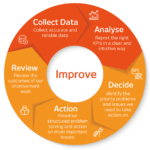Why goal statements matter
Writing goal statements can provoke plenty of debate and passion. Within the realm of key performance indicators (KPIs), goal statements are heavily used in the process of building KPI trees.
There are various ways to approach these statements, but unfortunately, there are also numerous ways to make mistakes in the process. This post aims to help you craft effective goal statements to use in a variety of instances, from building your KPI trees to planning your business strategy to mapping out your future career.
This post breaks it down into 3 simple steps, providing goal statement examples for each step, as well as pointing out 3 common mistakes to avoid. Scroll down to the end of the post for some FAQs.

Typical time to write a goal statement: 10 minutes
How to write goal statements in 3 simple steps with examples
Step 1
Brainstorm the outcomes and results you are looking for
Use whatever tool you are most comfortable brainstorming with. Focus on outcomes and results, not on activities and tasks.
Example
Sign up for the Sawdust and Running Diet Plan
...is a task or action.
Maintain a healthy body weight
...is the result that you are likely striving for when you sign up for that diet.
Step 2
Sort your goals by breadth, select a goal to define
In Step 2, you rank the brainstormed objectives with the most strategic at the top and the least strategic at the bottom.
When you brainstorm goals around a particular topic, some of those goals will be low level.
Which goal should I choose?
Generally, we will set the goal based on the most strategic of the goals we have brainstormed, though you may have a specific reason to choose a lower level goal.
Example
Let's say we are brainstorming goals around personal health and fitness. We might come up with both...
'We use comfortable running shoes'
and
'We have a long and healthy retirement'
Clearly the goal 'We have a long and healthy retirement' has a broader scope than 'We use comfortable running shoes'.
Step 3
Write your goal as 'future fact'
Write your goal as though it has already been achieved. You can call this 'tomorrow's truth' or 'future fact' (credit to Stacey Barr for that term, here's a link to her article).
- Make sure you focus on outcomes and results, not activities and tasks.
- Do not include targets and figures (these can be done separately, later on).
- Use pronouns (I, we, us, our) to make it easier to write about 'future fact'.
Example
The draft goal statement...
Build warehouse C17 by March
...is a task with a target delivery date. It is not clear why we should care about a new warehouse being built and what benefit it will deliver. Rewording this, focusing on outcomes and removing targets and goals, it becomes...
Our products are shipped without delay
3 common mistakes when writing goal statements
Why goal wording matters
In my professional experience, 'how to write goal statements' is one of the most common questions that comes up when people are learning to build KPI trees and is something many people find difficult. It may be tempting to reach for the SMART goals framework here, but scroll down to the FAQs section at the end of this post to find out why I don't recommend it.
Having run hundreds of goal writing sessions as the starting point for building KPI trees, there are 3 common mistakes that consistently pop up. The good news is that there are a few simple principles that can make writing effective goal statements much easier. Here are the 3 common mistakes and the simple fix.
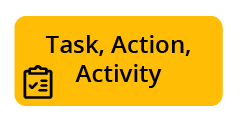
Mistake 1: Goal statements that are really 'Tasks, actions or activities'
If I go on a diet, my goal is not 'go on a diet'; it is to 'reach and maintain my ideal body weight'.
'Goals' that are tasks, actions or activities, perhaps including a deadline, may look like goals but are, in fact, not.
Here are three simple goals statements examples that are really tasks, actions or activities:
-
- Build warehouse C17
- All staff to complete health and safety training 101
- Sign up for the 'saw-dust and running' diet plan
These are not goals because they don't describe the impact of those activities. On a practical level, once the task is complete, they cease to be meaningful, and that's not a great foundation for our KPI design.
Taking our first example, once 'Build warehouse C17' is completed, what happens? Why should we care? What is the beneficial outcome? All we have described is a task and a deadline for that task.
Put simply, goals are about the results and outcomes we want to achieve, not the actions we take to achieve them.
Now, tasks, actions and activities do have their place, typically as part of the OKRs that we develop alongside our KPIs, though these should not be confused.
Key points:
- Tasks, actions and activities happen, then are complete, so they do not provide a solid foundation for selecting our KPIs.
- Tasks, actions and activities do not describe the outcome or result we are looking for, merely the things that should take place.
- We may decide to measure activity lower in our KPI tree, but this kind of KPI is a poor alternative to measuring outcomes and needs to be treated with caution.

Mistake 2: Goals that are 'Activity plus Target plus Timeframe'
A target + timeframe goal will typically follow the verb + subject + target + timescale format. Here are three examples of this format...
- Handover of operational new warehouse C17 by January 2024
- Deliver H&S training to 100% of the staff by the close of this month
- Complete 'saw-dust and running diet' and lose 20kg
The challenge with these statements comes in two parts.
Firstly, targets can be highly emotive and can distract from selecting meaningful measures.
For instance, in a commercial organisation, few people would argue with the concept of 'increasing profit'. However, if you were discussing a KPI tree with a sales team and you added the goal of 'Increase profit by 10x' there's a good chance many will have a very strong opinion about the legitimacy of that goal. That anger and emotion will distract from the almost certain agreement that 'increasing profit' is a good and sensible thing for the organisation to do.
Secondly, good targets take time, care and effort to create.
At this stage in the process, we probably don't know how we will measure something and/or what 'great' performance looks like. Targets should be a separate, later discussion apart from the discussion on whether we should be measuring something.
For both of these reasons, we should deal with targets separately and later in the process. Interestingly, I developed a 7-step method for organisational KPIs where targets come into play in Step 5. Click on the following link for an overview of the ROKS Enterprise method with all 7 steps.
Key points:
- Targets can be specific and emotive, clouding the discussion on whether the general goal is valid or not.
- At this stage in the process, we don't know how we will measure the goal, or what 'good' performance looks like, so it is not sensible to try and set up targets just yet.
- First, we set a measurable goal; later, we set the targets or key results.

Mistake 3: 'Achieve result through task' goals
Another common structure for written goals takes the form verb-subject-action (credit to Stacey Barr for that description), like these:
- Improve customer delivery times by building new warehouse C17 on time
- Create a safe working environment through daily toolbox talks
- Achieve ideal weight by following the 'saw-dust and running' diet
The issue with this kind of goal is that is far too easy to focus our measurement on the activity, or task, rather than the outcome. In fact, the wording actively encourages us to do this. So the focus for our first example would be to implement the 'Build warehouse C17 on time' rather than focus on improving customer delivery times.
Key points:
- Using the 'achieve result through task' structure encourages focus on measuring the activity rather than measuring the outcome.
- This focus can also act to accidentally exclude other mechanisms that may positively support the outcome, but which we have not yet been identified.
How to fix these common mistakes
A simple way to avoid these three problems is to word your goal as though it has already been achieved. You can call this 'tomorrow's truth' or 'future fact' (credit to Stacey Barr for that term).
So here are our original three examples...
- Build warehouse C17
- All staff to complete health and safety training 101
- Sign up for the 'saw-dust and running' diet plan
Rewriting these goal statements as 'future fact', they become...
- We offer timely delivery to our customers
- We have a safe working environment
- I maintain a good body weight
These look good, but they still have a problem: woolly words.

Woolly words: sound great, hard to pin down.
Woolly words are words that sound inspiring, but are really hard to measure or describe. Extreme examples include...
- Fabulous
- Best in breed
- Synergetic
- Bleeding edge
- Brilliant
- Inspiring
These are words that you will often find in advertising copy, mission and vision statements. They can make the reader feel great, but can be very difficult to clearly define and, as a result, measure.
In our example, our woolly words are...
- Timely
- Safe
- Good
If you still need persuasion that wording counts, check out this 'wording horror story' regarding the Cobra Effect!
3 great goal statement examples
Let's see what our three goal statement illustrations look like after replacing those woolly words with clear simple language:
- Our products are shipped without delay
- Our team go home safely each day
- We maintain a healthy body weight
When it comes to knowing how to write a goal statement, describing an ideal future state of the result we care about is one of the most powerful and natural ways of doing this.
Write as though it has already been achieved, making sure you avoid letting woolly words creep into your statements.
Put it into practise
There we have it! If you follow these 3 simple steps as well as the guidance on how to avoid the 3 most common mistakes, you will be writing goal statements that are in great shape to not only be turned into KPI trees, but also to guide your action setting to achieve your goals. Check out some final FAQs below and browse the Made to Measure blog for more valuable knowledge on all things KPIs.

How to write goal statements FAQs
The use of pronouns such as I, we, us, our is optional, but from experience that they help the 'future fact' statements flow naturally, so their use is encouraged.
People tend to reach for the SMART goals approach (based on the work of Locke and Latham) as soon as they hear the word 'goal' mentioned.
The SMART approach states that all objectives should be Specific, Measurable, Achievable, Realistic and Targeted. In truth, SMART is more about setting specific targets than describing outcomes or results.
Experience has shown that as soon as you start mixing targets with broad objectives, the focus shifts to discuss the size of the target, taking focus off the objective and our reason for wanting to achieve it.
Once you have read this post (How to write goal statements) and are ready to set targets, try the ROKET-DS approach for a field-tested approach to setting effective targets and key results.
If you are writing goal statements for an 'ideal future', you can test it/them by asking the simple question 'could we achieve that goal (or those goals) but still have problems?'. If the answer to that question is 'yes' then your goal statement(s) is/are incomplete.
This approach is known as 'reverse brainstorming' and you can find out a lot more about it in this in-depth reverse brainstorming page (along with a free downloadable how-to guide).



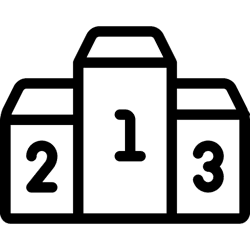
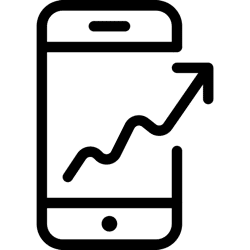
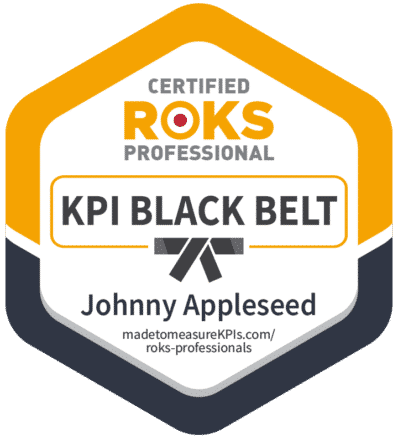

![Complete Guide to the OKR Framework: How to Create OKRs for Your Team [2024] okr kpis and targets logo](https://madetomeasurekpis.com/wp-content/uploads/2021/12/okr-kpis-and-targets-logo@2x-150x150.png)



